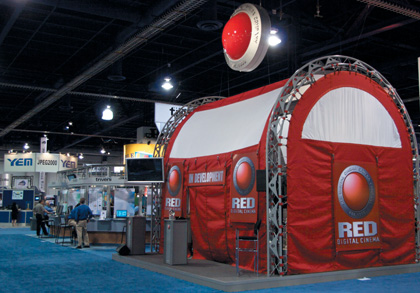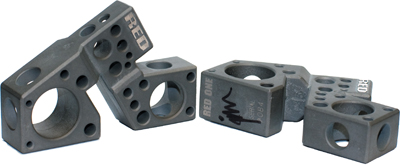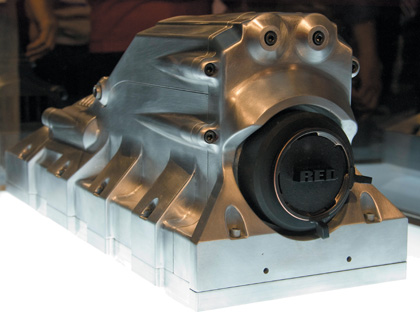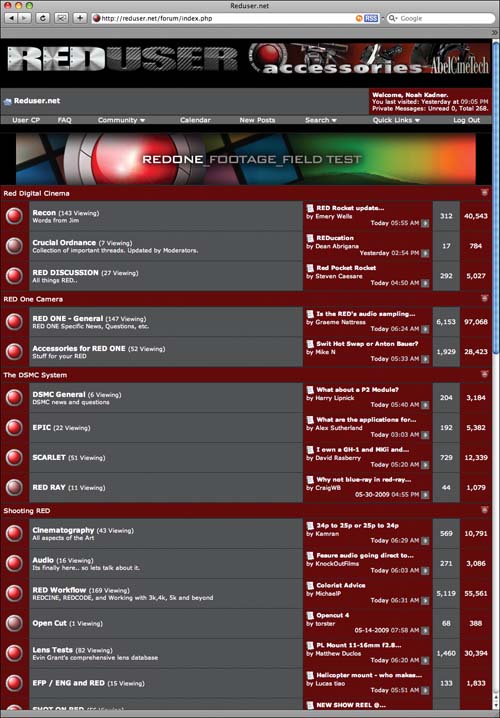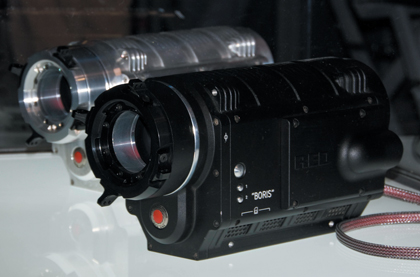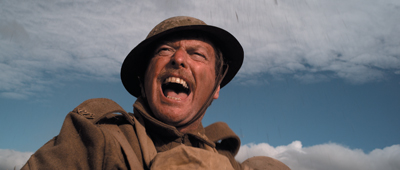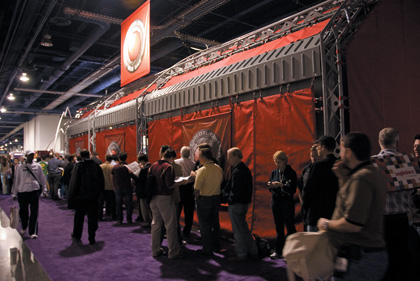The idea for the RED camera began, as many innovations do, with one person’s intense frustration with the status quo. In this case, that person was Jim Jannard, CEO of Oakley, Inc., a sunglasses and apparel company. The status quo in 2004 was the unavailability of a digital video camera that could produce the same quality as 35mm film. Jannard recognized a disparity between what was possible photographically with a 35mm motion picture camera and what could be done with a semiprofessional, high-definition (HD) camera that an average person could actually afford.
He also noted that digital still cameras already existed with resolutions much higher than high-definition, plus had the ability to shoot in RAW (or digital negative) format. He reasoned that with enough know-how and capital investment, a digital motion-picture camera could be built that is not only as good as 35mm film cameras but at a much lower cost, enabling anyone to shoot high-quality movies. Before we dive into using the camera and working with footage, let’s take a look at how this phenomenal camera came about and how it’s currently being used.
In order to get his idea off the ground, Jannard contacted a couple of industry experts. The first was Frederic Haubrich, creator of the Lumiere HD plug-in, which Jannard was using to transfer footage from HD cameras into his computer. The second was Ted Schilowitz, a marketing expert and designer who had launched hardware used for content creation, such as AJA’s video editing converter cards and G-Tech’s hard drive storage.
The RED group expanded to include more industry experts whose specialties would be needed to deliver a camera others had said could not be built. One of these experts was Stuart English, who had been a workflow expert at Panasonic supporting the company’s VariCam HD camera and the enabling of HD footage transfer over FireWire.
Another early team member was Graeme Nattress, a programmer who had spent years developing plug-ins for editing software and researching video compression and image-processing technologies. Nattress would be instrumental in the development of RED’s onboard compression software called REDCODE. Jarred Land, an Internet developer and part-time product designer who had launched the popular filmmaking portal DVXuser (www.dvxuser.com), also joined the team. Land would create REDuser (www.reduser.net), a Web site that became an important part of RED’s marketing success. (You’ll learn more about REDuser later in this chapter.)
The RED team worked from a design edict that called for several key elements in the finished camera, all of which would be necessary to enable image quality that could rival that of film. These requirements included a very high-resolution image sensor that could shoot at 4K (4,000 pixels of horizontal resolution). For comparison, most other digital cameras shoot at well under 2K.
The second mandate was that the camera use the same lens mount as a 35mm film camera so that it would have access to the same high-quality optics and be able to achieve comparable cinematography. The internal electronics would need to control the camera’s operation while capturing and compressing 4K footage with efficiency and high quality. Jannard also wanted the camera to be able to store footage as RAW data, which he was accustomed to working with on digital still cameras.
The result? Table 1.1 lists the eventual specifications that came out of the team’s work. (For more technical details on the camera, see Chapter 2.)
Table 1.1. RED ONE Specifications
Description | |
|---|---|
Sensor | 12 Megapixel Mysterium (24.4mm × 13.7mm) |
Resolution | 4K (4520 × 2540 pixels) |
Depth of field | 35mm cinema equivalent |
Frame rate | 23.98, 24, 25, 29.97, 30, 50, 59.94, 60, and variable (1 up to 120 in 2K for slow motion) |
Format | REDCODE 12-bit RAW at 4K, 3K, and 2K |
Data rate | 36 MB/second (REDCODE 36) and 28 MB/second (REDCODE 28) |
Audio | 4-channel uncompressed, 24-bit, 48kHz |
Weight | 10 lbs (body only) |
Base price | $17,500 (body only) |
At a certain point during development, Jannard realized his team had succeeded in designing the camera and that it would work, but the next big question was, would anyone want it? Another challenge RED encountered from the outset was mounting industry skepticism. From the moment RED was announced until cameras started to ship (and even at the time of this writing), some industry pundits have decried the company’s efforts.
The criticisms split into two primary concerns. First, the camera was vaporware and could never be delivered with those specifications at that price point. Second, the camera might be possible, but despite the specifications on paper, its image quality would never rival that of 35mm film. With motion-picture film’s nearly 110-year head start (dating from Louis Lumiere’s motion-picture film camera invention of 1895), Jannard and his team had their work cut out for them.
Note
Vaporware is a computer-industry term used to describe products that are announced but never actually released.
Much of what you’ve read up to this point about the development was not public knowledge. That changed on April 24, 2006, in Las Vegas, Nevada. At the annual National Association of Broadcasters (NAB) convention, RED made its public debut, announcing camera specifications and pricing. Initially, the team had little to show in their modest booth on the show floor, in the shadow of the film and video industry’s heavyweights (Figure 1.1).
All the company could offer during its first NAB show were brochures and a reservation policy. For $1,000, any interested party could put down a reservation for the right to purchase the eventual camera RED was proposing. In return, they received a serial number and a small titanium sculpture (Figure 1.2). Though the criticism from skeptics only intensified, Jannard’s vision was vindicated: By noon on the first day, RED already had more than 100 reservations.
RED left NAB in 2006 with lots of hype and expectation, but the year ahead proved especially challenging. Internally, development was moving as quickly as possible both on a technical level and an organizational level as the company rapidly grew to include more engineers and support personnel. On the outside, speculation was rampant among critics and enthusiasts. This was somewhat alleviated by marketing professional Schilowitz offering seminars and demonstrations of footage and prototypes (Figure 1.3 and Figure 1.4).
Meanwhile, to stimulate dialogue with the public, Land launched REDuser in December 2006 (Figure 1.5). The site became the clearinghouse for all information from RED and a portal into the company’s inner workings. Reservation holders, RED employees, enthusiasts, and critics alike were all invited to discuss anything related (or even completely unrelated) to RED on the site’s forums.
Note
REDuser was later joined by Scarletuser (www.scarletuser.com) to cover RED’s new prosumer camera, Scarlet.
Remarkably, as of this writing, RED has yet to purchase any advertising—despite having one of the highest levels of brand awareness and interest in the industry. That’s due in large part to the popularity of RED’s outreach on the Internet via REDuser and the stories, analyses, forum discussions, and blog posts it generates. The site also offers a direct conduit between Jannard and the public, who are welcome to comment, question, and argue with him.
RED returned to NAB in April 2007 with more than 1,000 reservations received. The company still lacked a shipping camera, but this time it had an expanded booth and a secret weapon provided by director Peter Jackson (King Kong, The Lord of the Rings trilogy). Jackson evinced an interest in RED since it had first been announced and had contacted Jannard to stay apprised of the project’s progress. By March 2007, RED had developed working prototypes of the camera and arranged to fly two of the cameras (nicknamed Boris and Natasha) to Jackson in New Zealand for testing (Figure 1.6).
Rather than just do a regular camera test, Jackson chose to shoot an actual short movie. The film was an action-adventure set along a front line in World War I, featuring explosions, tanks, and biplanes. Jackson shot over two days and then put the results through post-production, adding more explosions, animated machine-gun fire, sound effects, and music (borrowed from James Newton Howard’s score for Jackson’s King Kong). Crossing the Line was delivered the night before NAB opened and became the demo footage for RED’s booth (Figure 1.7).
Viewers of Crossing the Line were impressed by both the proof that the camera delivered exceptional imagery and the quality of the production Jackson had achieved on a fast turnaround. RED’s 2007 booth also included working models of the camera in its near-final body design, along with viewfinders and monitors (Figure 1.8). This went a long way toward quelling controversy. Reservations for the camera were again opened, though the big question remained: When would the camera actually ship? That was finally answered on August 31, 2007, when the first 25 reservations were filled with shipping cameras.
For its early reservation orders, RED offered “RED Day” seminars, conducted at its headquarters in Lake Forest, California. These sessions included an introduction to the camera and its workflow, along with hardware delivery and accessory consultations. For many owners, this was the first time they got their hands on the camera they’d been waiting more than a year to receive. RED Days continued throughout 2007 and 2008. By early 2009, the company had caught up with its reservations and was able to ship a camera upon order.
The RED ONE is now in use on a variety of music videos, TV series, commercials, and features. You’ll meet some of the professionals shooting these projects in the point-of-view (POV) sections throughout this book. Table 1.2 lists some of the projects that have been shot on the RED.
Table 1.2. Productions Shot on the RED
Description | |
|---|---|
Knowing | Feature, directed by Alex Proyas |
The Book of Eli | Feature, directed by the Hughes Brothers |
Che | Feature, directed by Steven Soderbergh |
My Bloody Valentine 3D | Feature, directed by Patrick Lussier |
The Informant | Feature, directed by Steven Soderbergh |
ER | TV Series, NBC |
Southland | TV Series, NBC |
Sanctuary | TV Series, SciFi Channel |
Leverage | TV Series, TNT |
The Cleaner | TV Series, A&E |
In addition to the Scarlet and EPIC cameras mentioned in the introduction, RED has plans for more motion-picture equipment. These include a disc-based 4K-playback device called RED-RAY, 4K projectors, and lenses at lower than the industry-standard prices. (To read more about RED’s future, visit this book’s companion Web site at www.peachpit.com/red for updates.)
For the remainder of the book, you’ll learn how to use the RED ONE, but keep that new gear in the back of your mind. Now that you know a little more about where the camera came from, who made it, how they did it, and why—let’s get to work learning how to actually use it. For those of you with a Scarlet or EPIC, you’ll find that a lot of the material in the upcoming chapters applies to you as well.


